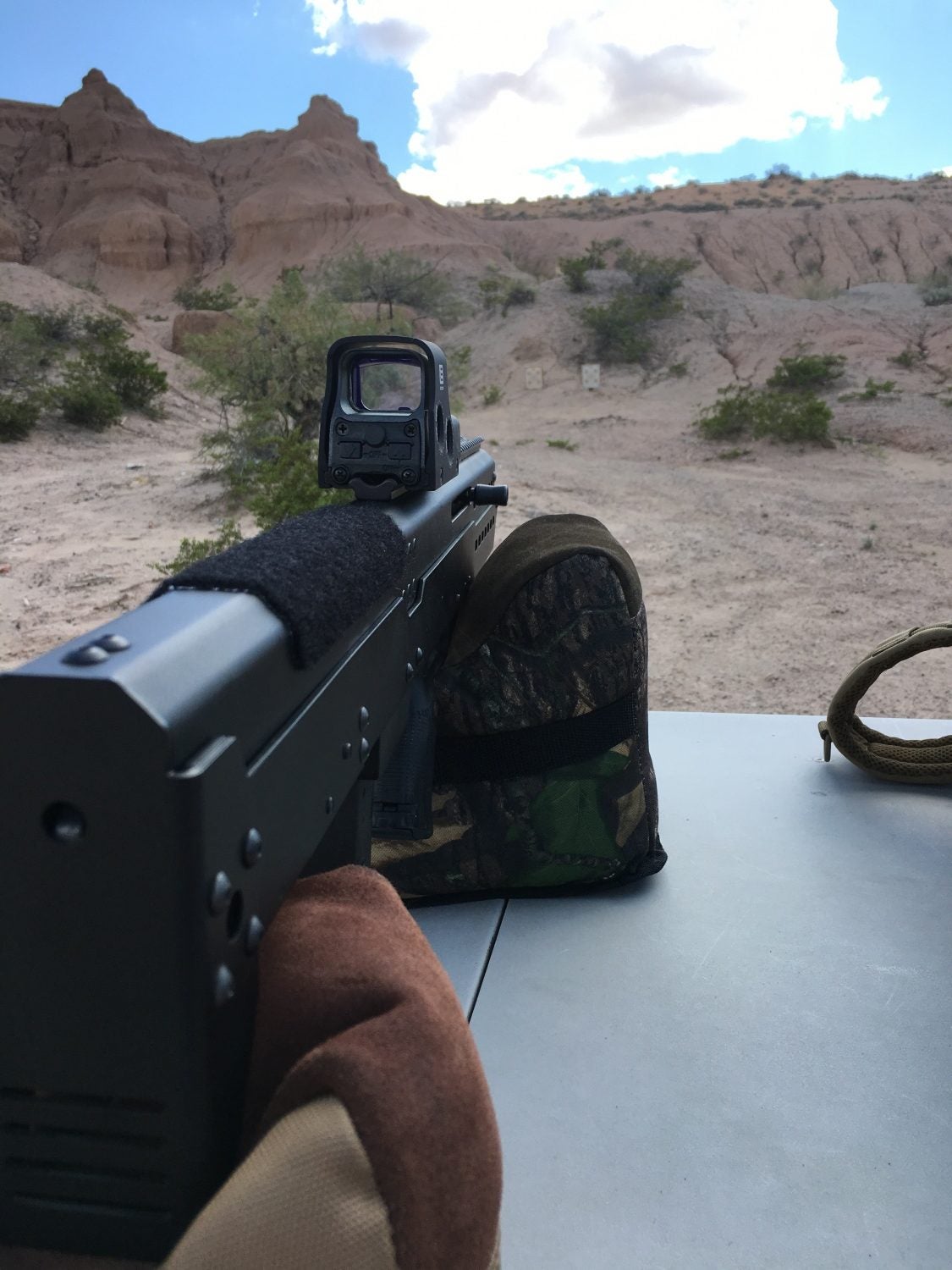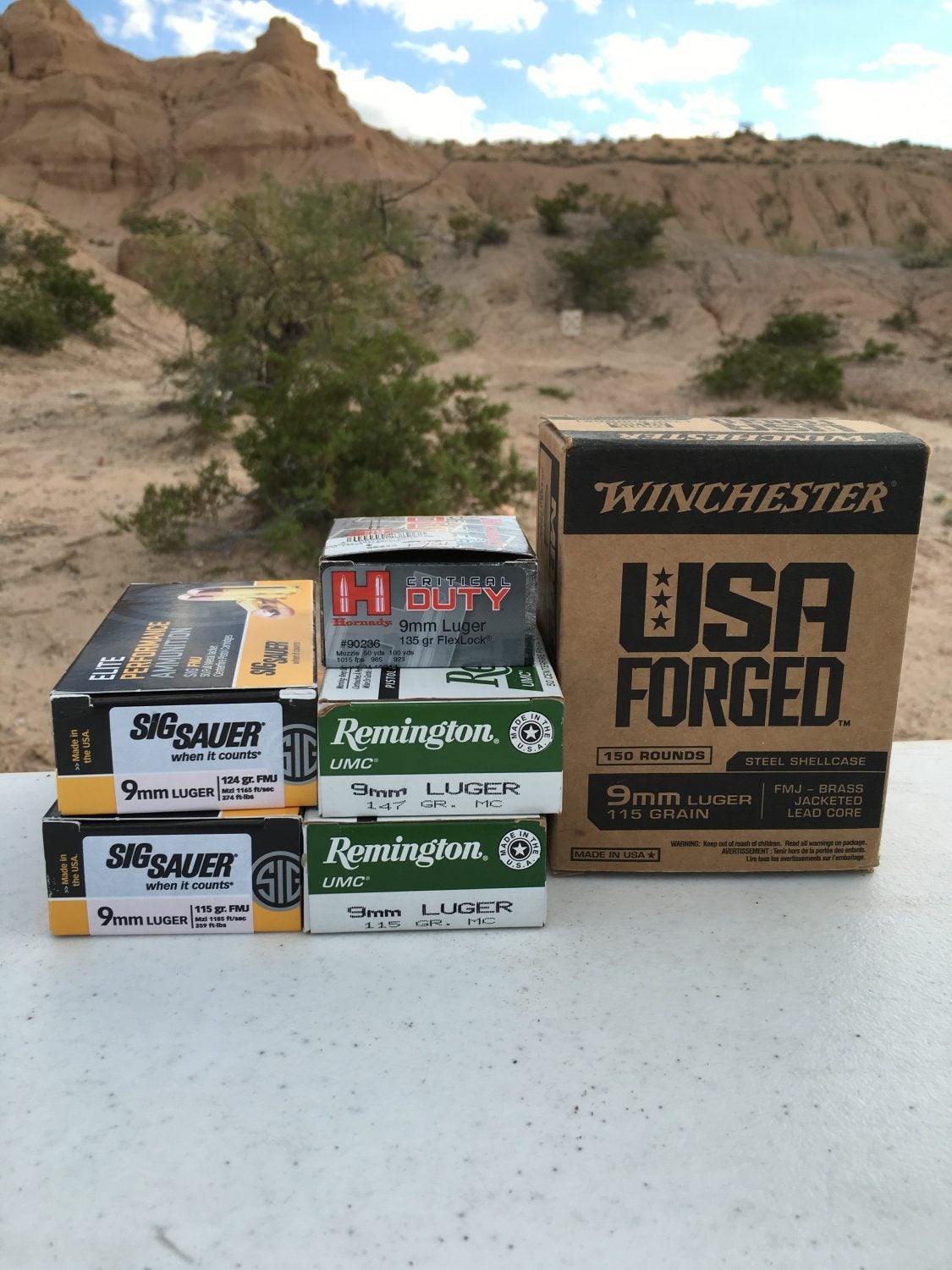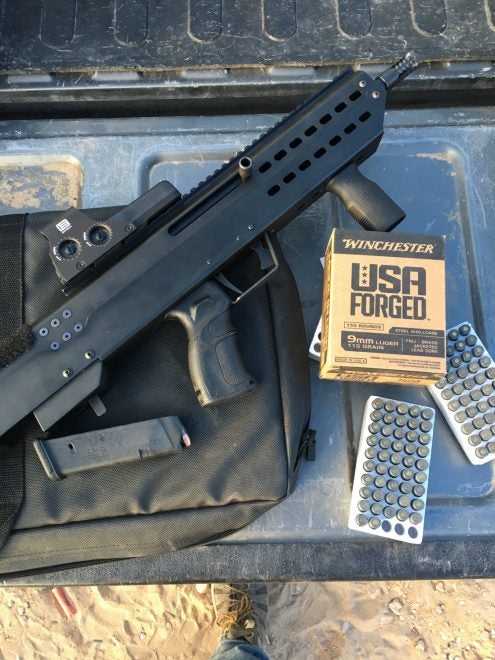The Jard J68 is a bullpup carbine developed by Jard Inc. Jard operates out of Sheldon, Iowa, and is known for the aftermarket triggers they offer for a variety of firearms. However, they also have some innovative firearm designs of their own, and one of them is the J68.
The J68 carbine feeds using Glock magazines and is available in 9mm, .40 S&W, and .45 ACP. This rifle was designed as a successor to the J67, which was reviewed by TFB’s Nathan S. in 2016. By using a bullpup design, the J68 fields a 17” free-floating barrel in a platform that is only 26 ¼” in length. In addition, it is fully ambidextrous and downward ejecting, and functions by utilizing a blowback operating mechanism. The price of the Jard J68 is $899.95.
The rifle I received was chambered in 9mm. It also shipped with a Magpul vertical grip on the fore-end, the J68 cheek pad, and Jard’s ‘Breaching Style Break.’ These features do not ship with the stock rifle but are available upgrades on Jard’s website. No sights are included with the rifle.

The J68.
The J68 is boxy looking, and most people would agree appears inelegant, to say the least. However, after attaching an EOTech 512 the bullpup carbine began to look cooler, futuristic even. The weight of the gun is 7 ½ pounds but feels lighter due to the way it balances. It also has a Picatinny rail up top, an M-Lok compatible fore-end, and a QD mount in the stock. Furthermore, the J68 has a non-reciprocating charging handle on both sides and uses a Garand-style safety paddle. A simple lever in front of the magazine serves as the magazine release.
Field stripping the J68 is easy and straightforward. Simply actuate a lever underneath the stock, and pull on the rear end of the upper receiver. The rifle opens like a clamshell rotating around a pin in the front, and the receivers can then be separated.

The breakdown.
After inspecting and cleaning the J68, I went to the range excited to finally shoot the gun. The first type of ammunition I fired was Winchester’s USA Forged 115-grain steel-case, which was spent dialing in the red-dot and plinking at a 10”inch steel plate. The trigger on the J68 is a single-stage match, which breaks right about 4lbs, and has a very short reset. My initial takeaway from shooting the bullpup carbine was how easy quick follow-ups were, with extremely light recoil combined with its quality trigger. The reloading procedure is also easy and intuitive.

The author shooting the Jard J68.
On approximately the sixtieth round the gun suffered its first malfunction, a failure to feed. I cleared the unchambered round and resumed firing, only to get jammed up with a failure to extract and a failure to feed. Consequently, my shooting session was over as I needed to return home to extract the rounds without damaging components. Once home, I disassembled the J68 for cleaning and discovered that the amount of carbon fouling was significant.

A malfunction with the J68.
After clearing and cleaning the rifle I returned to the range to conduct accuracy testing with four different 9mm ammunition loads. I tested accuracy by obtaining the average of three, 3-shot groupings at 25 yards.

Accuracy testing the J68.
First up to bat was Remington Metal Case 115gr, which obtained an average group of 1.25” at 25 yards. The second was Remington Metal Case 147gr, which averaged 1.9”. The third was Hornady Critical Duty 135gr Flexlock, which did 1.8”, and finally Winchester USA Forged 115gr, with a 1.4” average group size.
The J68 averaged approximately 6.4 MOA with all ammo types combined and did about 5 MOA with 115gr bullets. This level of accuracy is not impressive, although it should be adequate for shooting 10” steel plates out to 175 yards or so, which is close to the maximum effective range of pistol calibers. Unfortunately, in order to obtain the accuracy data, I had to clear a failure to extract approximately every ten rounds.

More malfunctions.
Separately, I noticed that the extraction process is very traumatic to the casing.

Spent casings from the J68.
Upon cleaning the J68 for the second time, I discovered that the bolt had impacted hard enough on spent casings that some of the finish had been scraped off from inside the upper receiver. There was also finish wear caused by the ejection process.

Finish wear sustained inside the upper receiver.

Finish wear from the ejection process.
The blowback operating mechanism makes a mess of the chamber, bolt, and receivers. It turns out there is a reason the manual suggests cleaning the bore and chamber after 50 rounds. The manual also suggests that after shooting the J68, the chamber and barrel be cleaned successively over a period of “three consecutive days, or until there is no longer any evidence of fouling.” Furthermore, the manual suggests having a Jard certified armorer inspect the rifle after 4,000 rounds. Consequently, I did what the manual recommended and rigorously cleaned the J68 before giving it a final reliability test.
I improved J68’s chances by buying two boxes of Sig Elite Performance ammo, one with 115g bullets and the other with 124g. This ammunition proved to be significantly more accurate, with the 115g averaging 0.93 inches at 25 yards, or about 3.75 MOA, and the 124g averaging about 4.45 MOA. Once accuracy testing on the Sig ammo was complete, I proceeded to find out if the J68 could get through both boxes without a malfunction. Unfortunately, the rifle suffered a failure to eject on exactly the fiftieth round.

The ammunition used during testing.
Final thoughts on the J68
The folks at Jard Inc. deserve credit for introducing new designs into the firearms market. The J68 is a unique firearm system that I wanted to like. Its bullpup and ambidextrous nature make for a very handy pistol caliber carbine. Light recoil makes the rifle very controllable, and it is complemented with a fantastic trigger. However, I experienced significant reliability issues with the carbine that was sent to me for testing. A rigorous cleaning and maintenance regimen is called for in the user’s manual, and after shooting it I understand why. Because of this, I would not recommend the J68 for personal defense or duty use. I hope that Jard Inc. can overcome the issues I experienced with their gun, and remain innovative within the industry.
 Your Privacy Choices
Your Privacy Choices
